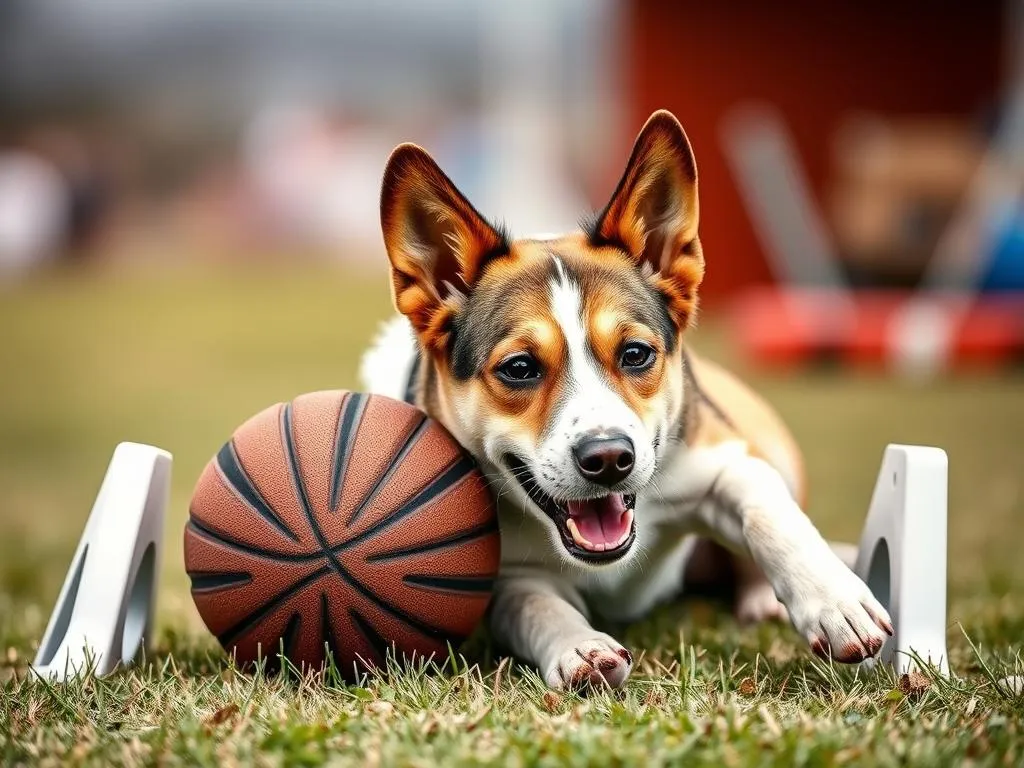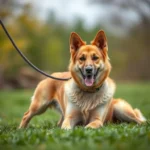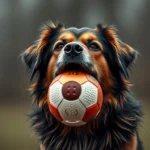
Introduction
Dog agility is a fast-paced sport that has captured the hearts of dog owners and enthusiasts alike. It involves a handler directing a dog through a timed obstacle course, showcasing the unique bond between them. This engaging activity not only provides a fun way to exercise but also enhances a dog’s physical and mental capabilities.
The importance of dog agility training extends beyond just competition; it fosters teamwork, communication, and trust between the dog and its handler. As you embark on your journey into the world of agility, you’ll discover numerous benefits, including improved physical fitness, enhanced mental skills, and a stronger bond with your furry friend.
In this article, we’ll explore the various facets of dog agility, from understanding the sport’s foundation to advanced training techniques and nutritional considerations. Let’s dive into the world of agility and unlock the potential of your canine companion.
Understanding Dog Agility
What is Dog Agility?
At its core, dog agility is a competitive sport where dogs navigate through a predetermined course of obstacles, which may include jumps, tunnels, weave poles, and more. Handlers guide their dogs using a combination of verbal commands and body language, emphasizing teamwork and communication.
Agility competitions can vary significantly, with events ranging from local trials to national championships. Each competition typically follows a standard format, including a set course that dogs must complete in the shortest time possible, with penalties for faults such as knocking down jumps or missed obstacles.
History of Dog Agility
The origins of dog agility can be traced back to the late 1970s in the United Kingdom, where it was initially inspired by equestrian sports. The first official agility competition took place in 1978 as part of the Crufts Dog Show, rapidly gaining popularity among dog enthusiasts.
Since its inception, agility has evolved, with various organizations establishing rules and regulations to standardize competitions. Today, agility is not only a fun pastime but also a serious sport, enjoyed by thousands of competitors worldwide.
Different Dog Breeds for Agility
While any dog can participate in dog agility, certain breeds tend to excel due to their physical attributes and temperament. Breeds that are commonly seen in agility competitions include:
- Border Collies: Known for their intelligence and agility, they are often the top contenders.
- Australian Shepherds: Energetic and eager to please, making them excellent agility partners.
- Golden Retrievers: Friendly and trainable, they thrive in agility settings.
- Jack Russell Terriers: Small but mighty, their speed and determination make them formidable competitors.
These breeds typically possess high energy levels, quick reflexes, and a strong desire to work with their handlers, making them ideal candidates for agility training.
Getting Started with Dog Agility Training
Preparing for Agility Training
Before diving into dog agility training, it’s essential to assess your dog’s readiness and temperament. Key factors to consider include:
- Age: Puppies should be at least one year old before engaging in high-impact training.
- Temperament: A dog that is easily distracted or fearful may need additional socialization and obedience training.
Basic obedience is crucial as a foundation for agility. Commands such as sit, stay, and come help establish a framework for more complex tasks.
Essential Equipment for Agility Training
To get started, you will need some essential equipment. Common obstacles used in dog agility training include:
- Jumps: Simple hurdles that dogs must leap over.
- Tunnels: Fabric or rigid tubes that dogs navigate through.
- Weave poles: Tall poles spaced apart for dogs to weave in and out.
You can purchase ready-made equipment or build your own using affordable materials. Ensure that all equipment is safe and suitable for your dog’s size and skill level.
Setting Up a Training Environment
Creating a safe and effective training environment is vital for successful agility training. Consider the following tips:
- Space: Ensure you have ample space, whether indoors or outdoors, to set up obstacles without hazards.
- Surface: Choose a non-slip surface to prevent injuries, such as grass, sand, or rubber matting.
- Distractions: Minimize distractions in the training area to help your dog focus on the task at hand.
Decide on indoor versus outdoor training based on your dog’s comfort and the available space. Both settings have their advantages, with outdoor spaces offering a more natural environment and indoor spaces providing controlled conditions.
Training Techniques for Dog Agility
Basic Commands and Obedience
Establishing a strong foundation of basic commands is essential for dog agility training. Key commands to focus on include:
- Sit: A fundamental command that helps control your dog.
- Stay: Ensures your dog remains in position while you guide them through the course.
- Come: Encourages your dog to return to you quickly.
Reinforcing these commands through positive reinforcement techniques, such as treats or praise, will enhance your dog’s responsiveness and overall obedience.
Introduction to Agility Obstacles
Introducing your dog to agility obstacles requires patience and encouragement. Follow these steps for a successful introduction:
- Start Slow: Begin with one obstacle at a time to avoid overwhelming your dog.
- Use Lures: Use treats or toys to entice your dog to navigate the obstacle.
- Positive Reinforcement: Reward your dog with praise or treats when they successfully complete an obstacle.
For example, when introducing a jump, encourage your dog to approach it and reward them for any attempt to leap over it, gradually increasing the height as they gain confidence.
Building Speed and Confidence
To enhance your dog’s speed and confidence in agility, consider the following techniques:
- Practice Short Courses: Create short sequences of obstacles that challenge your dog without overwhelming them.
- Vary the Speed: Encourage your dog to navigate obstacles at different speeds to build their adaptability.
- Celebrate Success: Always celebrate your dog’s successes, no matter how small, to build their confidence.
Incorporating fun and excitement into training sessions will keep your dog engaged and motivated.
Creating a Training Schedule
Consistency is key in dog agility training. Developing a training schedule can help you and your dog make steady progress. Consider the following:
- Frequency: Aim for short sessions (15-30 minutes) 3-5 times a week.
- Variety: Incorporate different obstacles and exercises to keep training fresh and enjoyable.
- Rest Days: Allow for rest and recovery to prevent burnout and injuries.
A sample training schedule might look like this:
| Day | Focus Area |
|---|---|
| Monday | Basic Commands |
| Tuesday | Jumping Techniques |
| Wednesday | Weave Poles Practice |
| Thursday | Tunnel Navigation |
| Friday | Short Course Run |
| Saturday | Rest Day |
| Sunday | Fun Play and Socialization |
Advanced Dog Agility Training
Handling Techniques
Once your dog has a grasp of the basics, you can start incorporating advanced handling techniques into your training. Common techniques include:
- Front Cross: A maneuver used to change direction while maintaining forward momentum.
- Rear Cross: A technique that allows the handler to cross behind the dog, ideal for maintaining flow.
Choosing the right handling technique often depends on your dog’s style and preferences. Experiment with different methods to find what works best for both of you.
Competing in Dog Agility Trials
If you plan to compete, familiarize yourself with the agility trial environment. Competitions often have specific rules and regulations, so it’s essential to be well-prepared. Here are a few tips:
- Practice in Similar Environments: Training in settings that mimic competition conditions can help your dog acclimate.
- Stay Calm: Your demeanor influences your dog’s behavior. Stay relaxed and confident during competitions.
- Know the Course: Familiarize yourself with the course layout before your turn, allowing for a strategic approach.
Common Challenges and Solutions
Every agility team faces challenges during training. Here are some common issues and their solutions:
- Refusal: If your dog refuses an obstacle, assess their comfort level and practice the obstacle separately.
- Knocking Down Bars: Ensure your jumps are at an appropriate height for your dog’s skill level and reinforce the jumping technique.
- Distractions: If your dog is easily distracted, practice in quieter environments and gradually introduce distractions.
Understanding these challenges and addressing them with patience and positive reinforcement will lead to a successful agility training experience.
The Role of Nutrition and Health in Agility Training
Importance of Proper Nutrition
Nutrition plays a pivotal role in your dog’s performance in dog agility. Active dogs have specific dietary needs that should be met to support their energy levels and overall health. Consider the following:
- High-Quality Protein: Essential for muscle repair and maintenance.
- Balanced Carbohydrates: Provide energy for training sessions, especially complex carbohydrates like brown rice or sweet potatoes.
- Healthy Fats: Necessary for energy and overall health, incorporating sources like fish oil can be beneficial.
Consulting with a veterinarian or a canine nutritionist can help you determine the best diet tailored to your dog’s needs.
Health Considerations
Regular veterinary check-ups and vaccinations are crucial to keep your dog healthy and ready for agility training. Additionally, be mindful of common injuries associated with agility, such as:
- Sprains and Strains: Can occur from overexertion or improper warm-ups.
- Paw Injuries: Keep an eye on your dog’s paws for cuts or abrasions from rough surfaces.
Preventive measures, like proper warm-up routines and conditioning exercises, can help minimize the risk of injuries and ensure your dog remains fit for agility training.
Conclusion
Mastering dog agility is a rewarding journey that enhances not only your dog’s physical abilities but also your bond as a team. By understanding the fundamentals of agility, preparing adequately, and employing effective training techniques, you can cultivate a successful agility experience for both you and your canine companion.
As you embark on this exciting endeavor, remember that patience, consistency, and a positive attitude are key to achieving your goals. Embrace the challenges and celebrate the victories, big and small, as you and your dog navigate the exhilarating world of agility together. Happy training!









